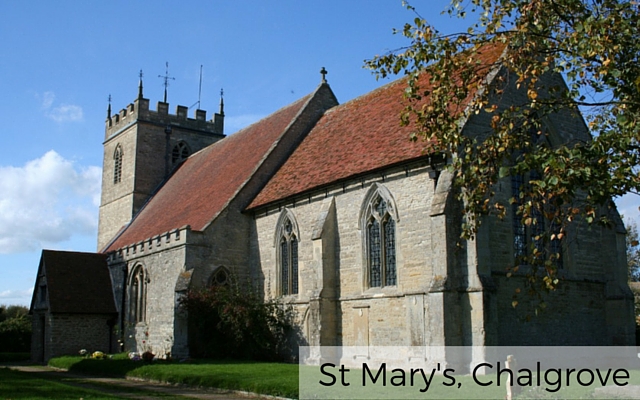Why not listen to this digital organ as you read? Click here for some Mendelssohn. There is another link further down the page.
I expect when it comes to custom built digital organs this will be one of the smallest that we are ever commissioned to make. It is far more usual for a church with a large 3 manual pipe organ facing a repair bill of hundreds of thousands to explore the significant savings that a digital alternative has to offer.
The reasoning at St Mary’s could not have been more different. Here we have an important medieval church undergoing a vast programme of restoration to return it as far as possible to an ‘original’ appearance while at the same time enabling it to have a modern worship and community function.
Critical to the refurbishment was to set the chancel with its wall paintings from 1330 into a simple but functional space leaving the paintings as the star of decoration.
A small 2 manual pipe organ was free standing at the west end of the nave. The NPOR states the organ dates from the 1930’s but it looks to my eye to be older. Whatever its date it was a much later addition to the church. Here is an interesting time lapse video of the removal of the organ:
Some special design details for the new Digital Organ
So a decision was made to keep the floor space as clear as possible but compromise with a digital replacement that apart from the console would be invisible. The console also had to have minimum visual impact in its new location next to the new choir stalls in the chancel.
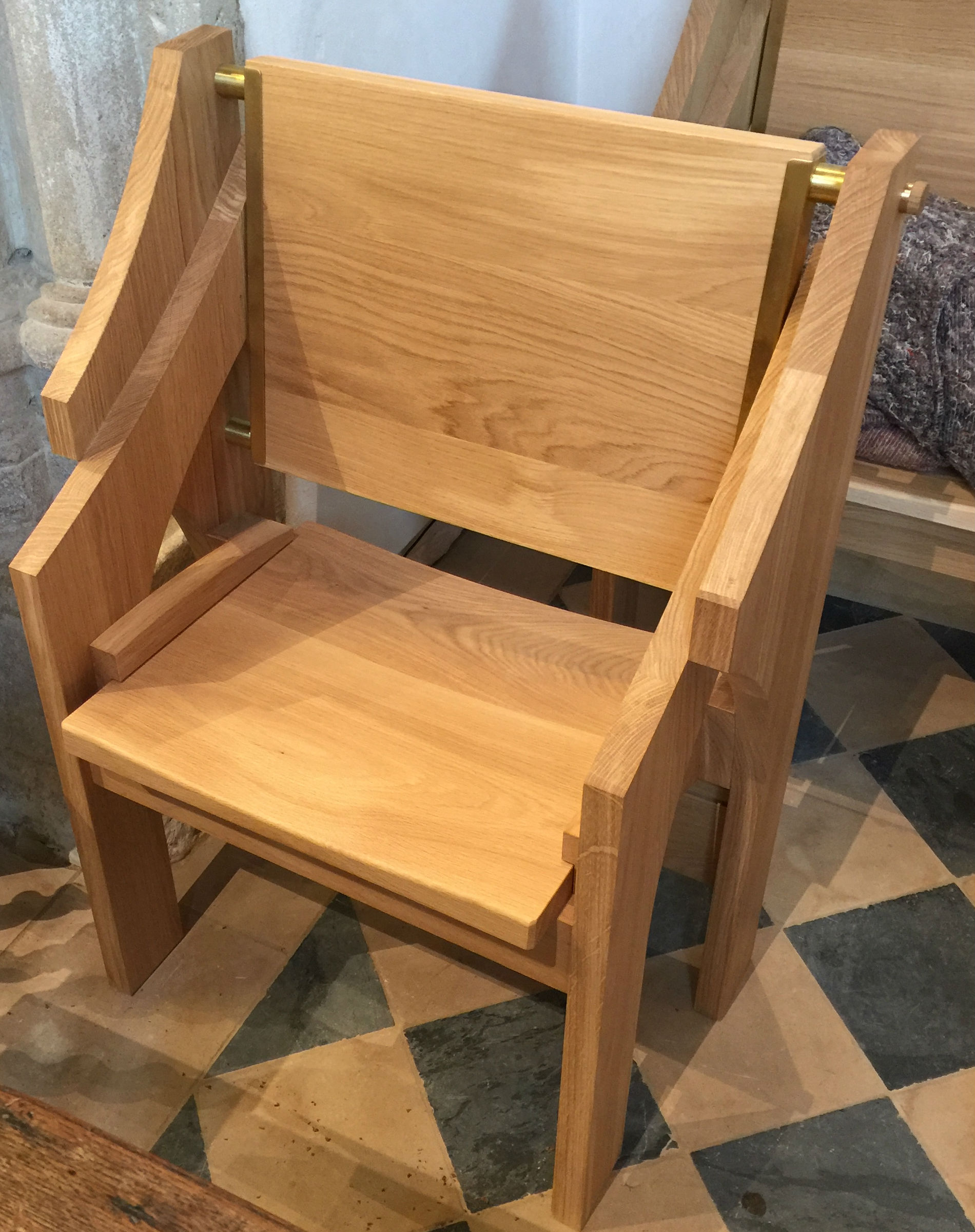
Another unusual feature we were asked to accommodate was easy maneuverability of the console so it could be relocated when used as a recital instrument. Most of you will know this is usually done placing the organ on a mobile plinth. That solution was not possible at St Mary’s as the organ height had to be kept below the height of the adjacent choir stall.
So working with our partner builder Renatus of Barnstaple we devised a ‘sedan chair’ type of lifting handles that store inside the organ but can be passed through ports under the keyboard shelf allowing four people to move the console with minimum effort and safety. For recitals the organ will be moved to the center of the chancel so the musician is in full contact with the audience. What a good idea. Has this solution been done before? Do let me know if this is a UK Regent Classic first!

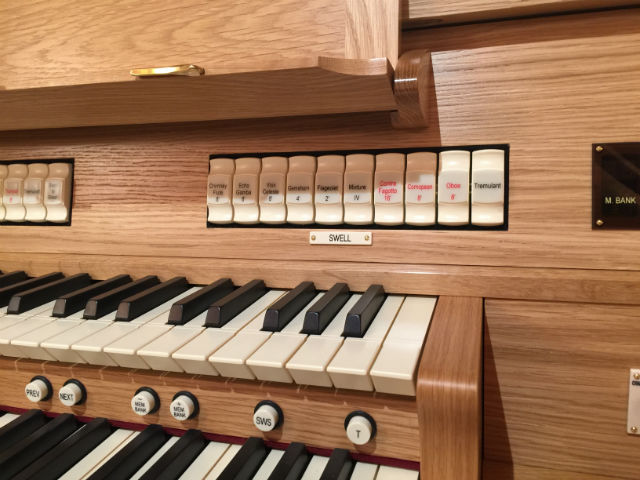
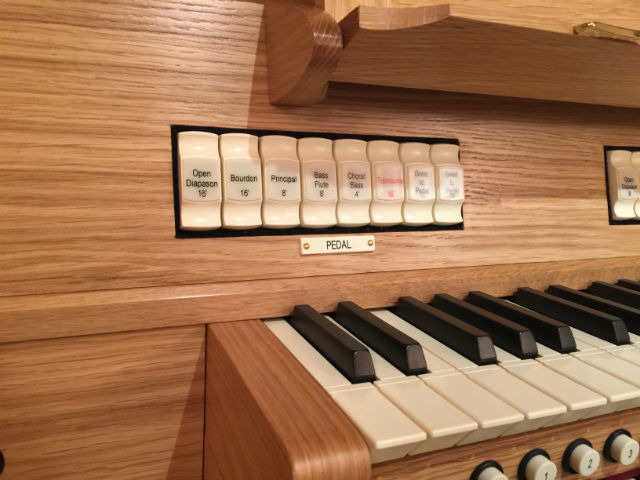
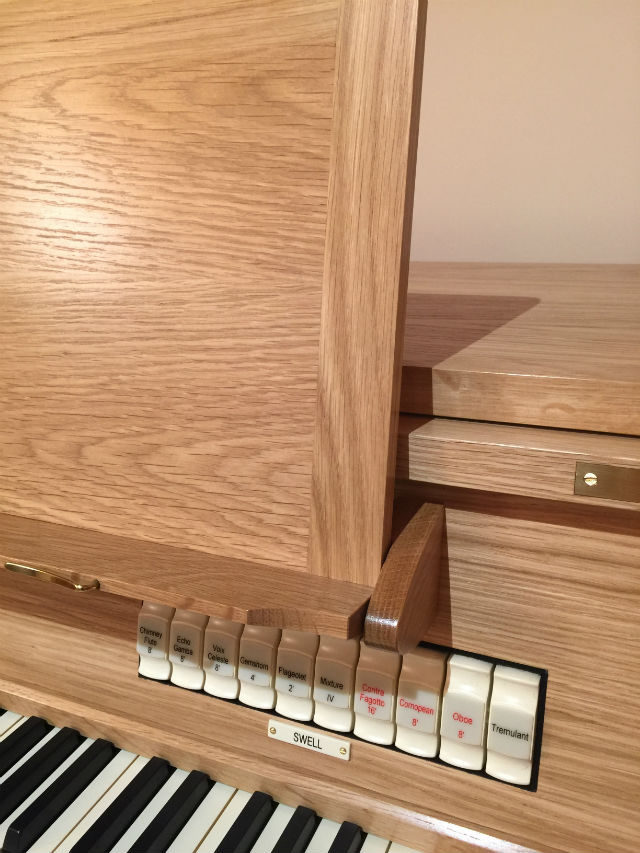
A beautiful but simple console design
As you will see this is a tab organ of just 23 speaking stops. The speaker system is completely invisible high in the nave roof hidden behind radiant heater panels together with a secondary set of speakers high on the chancel west wall that can be independently switched on or off at the console. The stop table details can be found on this Client Installation page.
The lovely craftsmanship of the console woodwork can be seen in our pictures – what do you think?
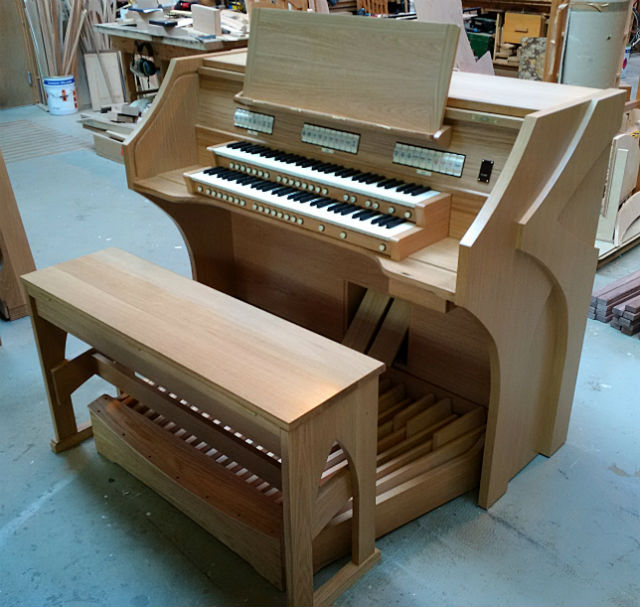
St Mary’s Chalgrove – Some interior details
New lighting and heating were part of a comprehensive scheme including new lime plaster to most of the walls and the cleaning of stonework that had been painted in the 1960’s. The interior is now a wonderfully bright and clean space that will serve worship and the community for years to come. To hear a recording Thalben Ball’s piece in the style of Stanley on this organ Click here.
The church also has a very rare double squint seen in this photograph below:
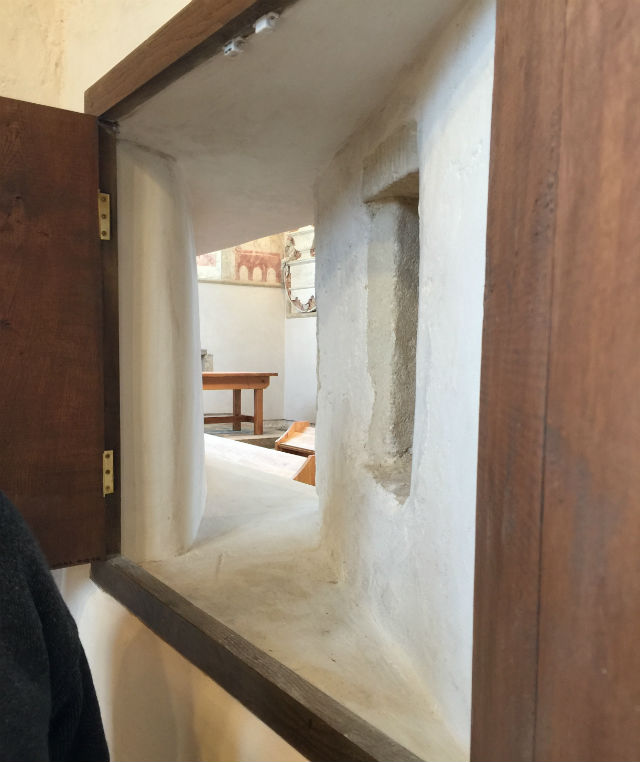
This was a medieval viewing slot that allowed lepers standing outside the building to view the sacrament at the altar. This aperture also allowed those outside to see the wall painting depicting the ascent to heaven. The outside viewing point is now the east end of the north aisle showing that it went out of use somewhere in the 15th century when the north aisle was built.
The work was substantially funded by a Heritage Lottery Grant and the church reopened in April 2016. If you are interested in looking at the full works that were done for the restoration, you can have a look at this video:
You can also find out more about the church itself by going to their website.
I have had a passion for church organs since the tender age of 12. I own and run Regent Classic Organs with a close attention to the detail that musicians appreciate; and a clear understanding of the benefits of digital technology and keeping to the traditional and emotional elements of organ playing.
